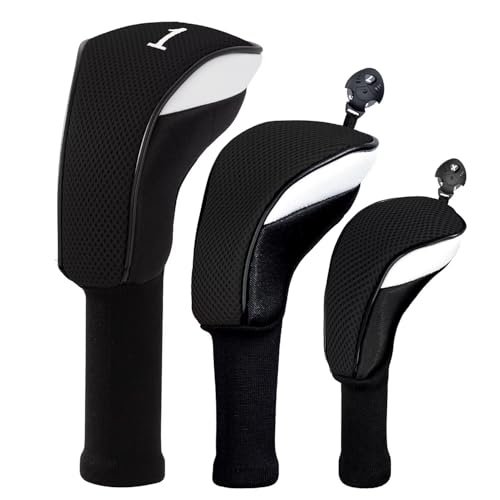Have you ever wondered what the longest golf ball ever hit was? Golfers have been striving to hit the ball farther and farther for centuries, and with advancements in technology and materials, golf balls are now designed to travel farther than ever before. But what is the longest distance ever recorded for a golf ball hit?

The answer to this question is not straightforward, as there are many factors that can influence the distance a golf ball can travel. The type of golf ball, the golfer’s swing speed and technique, the environmental conditions, and the equipment used all play a role in determining how far a golf ball can be hit. In this article, we will explore the historical record of the longest golf ball hit, the factors that influence golf ball distance, and the technology and materials used in modern golf balls.
Key Takeaways
- The longest golf ball ever hit is a matter of debate, as there are many factors that can influence the distance a golf ball can travel.
- The type of golf ball, the golfer’s swing speed and technique, the environmental conditions, and the equipment used all play a role in determining how far a golf ball can be hit.
- Modern golf balls are designed with advanced technology and materials to maximize distance, but choosing the right golf ball for your game requires understanding your own swing and preferences.
Historical Record of the Longest Golf Ball Hit
https://www.youtube.com/watch?v=QbPXjx2fj1I&embed=true
Golf is a game of precision and skill, but it’s also a game of power. One of the most impressive displays of power in golf is the long drive, where golfers compete to see who can hit the ball the farthest. The longest golf ball hit in history is a feat that has been hotly contested over the years, with different records being set and broken. In this section, we’ll take a look at the historical record of the longest golf ball hit.
Guinness World Records
The Guinness World Records is the go-to source for official records, and they have recognized several records for the longest golf ball hit. According to their records, the longest drive in a competition is 515 yards (471 m) by 64-year-old Mike Austin in 1974 at the US Senior National Open Qualifier with a 43.5″ steel shafted persimmon wood driver. This record has stood for almost 50 years and is still recognized as the official record for the longest drive in a competition.
However, it’s worth noting that the Guinness World Records also recognizes the longest drive ever hit in a non-competition setting. This record is held by Mike Austin as well, who hit a ball 515 yards (470 m) during a practice session in 1971. While this record is not officially recognized as the longest golf ball hit in competition, it’s still an impressive feat that deserves recognition.
Overall, the Guinness World Records is the most reliable source for official records, and their recognition of Mike Austin’s 515-yard drive in a competition is the most widely accepted record for the longest golf ball hit.
In conclusion, the longest golf ball hit is a feat that has been hotly contested over the years, but the official record recognized by the Guinness World Records is 515 yards (471 m) by Mike Austin in a competition. While there have been longer drives hit in non-competition settings, the official record for the longest drive in a competition is still an impressive feat that showcases the power and skill of golfers.
Factors Influencing Golf Ball Distance
https://www.youtube.com/watch?v=IJCwNHUoiiI&embed=true
When it comes to hitting the longest golf ball ever, there are several factors that come into play. Here are some of the key factors that can influence your golf ball distance:
Swing Speed
One of the most important factors in determining how far your golf ball will travel is your swing speed. The faster your swing speed, the more energy you can transfer to the ball, resulting in greater distance. Therefore, if you want to hit the longest golf ball ever, you need to work on increasing your swing speed.
Ball Compression
Another key factor that can affect your golf ball distance is the compression of the ball. The compression of a golf ball refers to how much the ball compresses when it is struck. A ball that is too soft may not compress enough, resulting in less distance, while a ball that is too hard may not compress at all, also resulting in less distance. Therefore, it is important to choose a ball with the right compression for your swing speed.
Dimple Design
The dimple design of a golf ball can also play a role in how far it travels. The dimples on a golf ball are designed to create lift and reduce drag, which helps the ball stay in the air longer and travel farther. Therefore, choosing a ball with the right dimple pattern can help you hit the longest golf ball ever.
Ball Flight
The trajectory of your golf ball can also impact how far it travels. A ball that flies too high may lose distance due to excess air resistance, while a ball that flies too low may not carry as far. Therefore, it is important to work on your ball flight to optimize your distance.
In summary, to hit the longest golf ball ever, you need to focus on maximizing your swing speed, choosing the right ball compression and dimple design, and optimizing your ball flight. By taking these factors into consideration and working on your technique, you can increase your chances of hitting the longest golf ball ever.
Golf Ball Technology and Materials
https://www.youtube.com/watch?v=djSfWNwM0wY&embed=true
When it comes to golf ball technology and materials, there are two main components to consider: the core and the cover. The materials used in these components can have a significant impact on the distance and performance of the golf ball.
Core and Cover Materials
The core of a golf ball is typically made of rubber or synthetic materials and can vary in size and compression. The compression rating of a golf ball refers to how much the ball compresses when it is struck. Higher compression balls are better suited for faster swing speeds, while lower compression balls are better for slower swing speeds.
The cover of a golf ball can be made of a variety of materials, including surlyn, ionomer, and urethane. Surlyn is a common material used in cheaper golf balls due to its durability and resistance to scuffing. Ionomer is a similar material that is slightly softer, providing more feel and spin control. Urethane is a premium material used in high-end golf balls, offering greater feel and control around the greens.
Aerodynamic Features
In addition to core and cover materials, golf ball manufacturers have also developed various aerodynamic features to help golfers achieve greater distance and accuracy. For example, the Titleist Pro V1 features a 352 tetrahedral dimple design, while the Callaway Chrome Soft uses a dual mantle layer to reduce spin and increase distance.

Another recent development in golf ball technology is the LSX Core Fast material used in the Titleist Velocity golf ball. This material is designed to provide faster ball speeds and greater distance, making it a popular choice for golfers looking to maximize their drives.
Overall, the materials and technology used in golf balls have come a long way in recent years, offering golfers of all skill levels greater distance, accuracy, and control on the course.
Role of Golf Ball Compression
https://www.youtube.com/watch?v=NGGLPhD7YXI&embed=true
When it comes to hitting long shots in golf, the role of golf ball compression cannot be overstated. Understanding the compression of a golf ball can help you choose the right ball for your swing speed, which can lead to longer and more accurate shots.
Compression Rating
The compression rating of a golf ball refers to how much the ball will deform when it is struck by a golf club. The compression rating is usually a number between 0 and 200, with lower numbers indicating a softer ball and higher numbers indicating a harder ball. A lower compression ball will compress more when hit, which can lead to more distance for golfers with slower swing speeds. Conversely, a higher compression ball will compress less when hit, which can lead to more accuracy and control for golfers with faster swing speeds.

Low vs High Compression
Low compression golf balls are ideal for golfers with slower swing speeds, typically below 85 mph. These golf balls are designed to compress more when hit, which can help golfers achieve more distance. Mid compression golf balls are ideal for golfers with moderate swing speeds, typically between 85 and 95 mph. These golf balls offer a balance of distance and control. High compression golf balls are ideal for golfers with faster swing speeds, typically above 95 mph. These golf balls are designed to compress less when hit, which can help golfers achieve more accuracy and control.
In conclusion, understanding the compression rating of a golf ball is important for golfers who want to hit longer shots. By choosing the right compression rating for your swing speed, you can optimize your distance and accuracy on the golf course.
Importance of Spin in Golf Balls
https://www.youtube.com/watch?v=aJA3BNaRU-g&embed=true
When it comes to hitting the longest golf ball ever, spin is a crucial factor that can make or break your game. In fact, the right amount of spin can help you achieve greater distance, accuracy, and control over your shots. Here are a few things you need to know about the importance of spin in golf balls:
Spin Control
Spin control refers to the ability to control the amount of spin on the golf ball. This is important because too much or too little spin can affect the trajectory, distance, and accuracy of your shots. For example, if you hit a shot with too much spin, the ball may climb too high, lose speed, and fall short of the target. On the other hand, if you hit a shot with too little spin, the ball may not climb high enough, lose distance, and roll too far on the ground.

To achieve spin control, you need to choose a golf ball that matches your swing speed, style, and preferences. Some golf balls are designed for low spin, while others are designed for high spin. The right choice depends on your skill level, playing conditions, and goals. For instance, if you have a fast swing speed and want to maximize distance, you may prefer a low-spin golf ball. Conversely, if you have a slower swing speed and want to improve accuracy, you may prefer a high-spin golf ball.
Low Spin vs High Spin
Low spin golf balls are designed to minimize backspin and sidespin, which can reduce drag and increase speed. These balls are ideal for golfers who want to hit longer shots and reduce the effects of wind, but may sacrifice some accuracy and control. Low spin golf balls are typically made with harder covers and cores, which can provide a firmer feel and more distance.
High spin golf balls, on the other hand, are designed to maximize backspin and sidespin, which can create more lift and control. These balls are ideal for golfers who want to hit shorter shots with more precision and spin, but may sacrifice some distance and speed. High spin golf balls are typically made with softer covers and cores, which can provide a softer feel and more spin.
In conclusion, spin is an important factor in golf balls that can affect your game in many ways. By understanding the importance of spin control, and choosing the right golf ball for your needs, you can improve your chances of hitting the longest golf ball ever and achieving your goals on the course.
Types of Golf Balls for Distance
When it comes to hitting the longest golf ball ever, the type of golf ball you use is crucial. There are different types of golf balls that cater to different needs. In this section, we will discuss the top three golf balls for distance.
Titleist Velocity
Titleist Velocity golf balls are designed to provide maximum distance without compromising on feel and control. They have a high-speed LSX core that generates fast initial velocity, providing explosive distance on every shot. The ball’s spherically-tiled 328 tetrahedral dimple design provides a consistent ball flight, making it easier to hit straight shots.
Callaway Supersoft
Callaway Supersoft golf balls are engineered to provide maximum distance with ultra-low compression. The ball’s ultra-low compression core delivers low spin rates and a soft feel, making it easier to hit longer and straighter shots. The ball’s HEX Aerodynamics pattern reduces drag and enhances lift, providing a stable and consistent ball flight.
TaylorMade Project S
TaylorMade Project S golf balls are designed to provide maximum distance with a soft feel. The ball’s dual-distance core is engineered to reduce spin and increase speed, providing explosive distance on every shot. The ball’s soft ionomer cover provides a great feel and control, making it easier to hit accurate shots.
In conclusion, choosing the right golf ball is crucial if you want to hit the longest golf ball ever. The Titleist Velocity, Callaway Supersoft, and TaylorMade Project S are some of the best golf balls for distance. With their unique features, you can be sure to hit longer and straighter shots.
Golf Ball Construction and Features
When it comes to golf ball construction, two key features that affect the distance and speed of the ball are dimple patterns and multi-layer construction.

Dimple Patterns and Effects
Dimple patterns are an essential aspect of golf ball construction. They help reduce drag and increase lift, which in turn helps the ball travel further and faster. The most common dimple pattern is the 350 octahedral dimple pattern, which is used by many golf ball manufacturers.
Different dimple patterns can have varying effects on the ball’s flight. For example, shallow dimples tend to produce a higher trajectory, while deeper dimples create a lower trajectory. Additionally, the number of dimples on a ball can also affect its performance. A higher number of dimples generally results in less drag and more lift, allowing the ball to travel further.
Multi-Layer Construction
Another critical aspect of golf ball construction is multi-layer construction. Golf balls can be made with two, three, or even four layers. Three-piece construction is the most common, with a soft rubber core, a middle layer, and a thin outer layer.
The soft rubber core helps reduce spin, which can cause the ball to hook or slice. The middle layer provides additional support and helps control the ball’s spin, while the outer layer provides durability and control. Four-piece construction adds an additional layer for even more control and spin.
Overall, the construction and features of a golf ball play a significant role in how far and fast it can travel. By choosing a ball with the right dimple pattern and multi-layer construction, you can improve your game and achieve longer, straighter shots.

Regulations and Standards
USGA Rules
The United States Golf Association (USGA) has set rules and standards for golf balls to maintain fairness and consistency in the game. According to the USGA, a golf ball must not weigh more than 1.620 ounces and must have a diameter of at least 1.680 inches. The initial velocity of a golf ball must not exceed 250 feet per second when measured at a temperature of 75°F.
The USGA also sets standards for the distance a golf ball can travel. Currently, the Overall Distance Standard is set at 317 yards (plus a 3-yard tolerance). To conform to this standard, a golf ball must not travel more than 320 yards when struck with a swing speed of 120 miles per hour, launched at an angle of 10 degrees, and with a spin rate of 2,520 RPM. However, starting from the 2028 testing cycle, the testing conditions will be changed to 125 mph clubhead speed, 11-degree launch angle, and 2220 rpm, while the Overall Distance Standard will remain the same. This change is to reflect how the longest hitters play the game [1].
Titleist Pro V1 golf balls are one of the most popular golf balls used by players. The USGA has approved the Titleist Pro V1 golf balls for use in official play [2]. However, the USGA has also stated that the Titleist Pro V1 golf balls must conform to the USGA’s rules and standards to be used in official play.
In conclusion, the USGA has set regulations and standards for golf balls to maintain fairness and consistency in the game. The rules and standards include weight, diameter, initial velocity, and distance. The Titleist Pro V1 golf balls are approved for use in official play but must conform to the USGA’s rules and standards [1,2].
[1] The Golf Ball and Distance: Frequently Asked Questions
[2] Titleist Pro V1 Golf Balls

Choosing the Right Golf Ball
As a golfer, choosing the right golf ball can make a significant difference in your game. There are many factors to consider, such as your skill level, swing speed, and personal preferences. In this section, we will discuss some of the most important factors to consider when choosing the right golf ball for you.
Amateur vs Professional Needs
Amateur golfers and professional golfers have different needs when it comes to golf balls. Professional golfers need a ball that can handle high swing speeds and provide excellent spin control. On the other hand, amateur golfers may not have the same swing speed or need for spin control.
If you are an amateur golfer, you may want to consider a ball that provides more forgiveness and distance. These balls are designed to help you hit straighter and farther shots, even if your swing is not perfect. If you are a professional golfer, you may want to consider a ball that provides better spin control and accuracy.
Feel and Control Preferences
Feel and control are two important factors to consider when choosing a golf ball. Some golfers prefer a softer ball that provides more feel and control around the green. Other golfers prefer a harder ball that provides more distance and less spin.
If you are someone who prefers a softer ball, you may want to consider a ball with a lower compression rating. These balls are designed to provide more feel and control around the green. If you prefer a harder ball, you may want to consider a ball with a higher compression rating. These balls are designed to provide more distance and less spin.
When choosing a golf ball, it is important to consider your personal preferences and needs. Take the time to test out different balls and find the one that works best for you. Remember, the right golf ball can make a significant difference in your game.
Golf Ball Innovations and Future Trends
As golf technology continues to advance, golf ball innovations are also evolving. In this section, we will explore some of the emerging technologies and eco-friendly developments that are shaping the future of golf balls.
Emerging Technologies
One of the most exciting developments in golf ball technology is the use of aerodynamics to improve performance. Advanced dimple patterns and aerodynamic designs are being used to reduce drag and increase lift, resulting in longer and straighter shots. Golf ball manufacturers are also experimenting with new materials, such as graphene, to create stronger and more durable golf balls.
Another trend in golf ball technology is the use of matte finish colors. While traditional glossy finishes are still popular, matte finishes are becoming more common. The lack of shine on the ball can reduce glare and make it easier to track the ball in flight. Additionally, some golfers find that matte finish golf balls are easier to spot in the rough.
Eco-Friendly Developments
As concerns about the environment continue to grow, golf ball manufacturers are exploring ways to create more eco-friendly products. One of the most promising developments is the use of biodegradable materials in golf ball construction. Biodegradable golf balls can break down over time, reducing the amount of waste generated by the sport.

Another eco-friendly trend is the use of recycled materials in golf ball construction. Some manufacturers are using recycled rubber, plastics, and other materials to create golf balls that are both high-performing and environmentally friendly. By reducing the amount of new materials needed to create golf balls, these companies are helping to reduce their environmental impact.
Overall, the future of golf ball technology looks bright. With new materials, aerodynamic designs, and eco-friendly developments, golfers can look forward to longer, straighter shots and a more sustainable sport.










